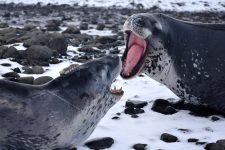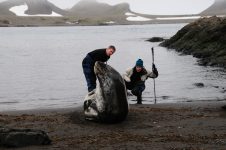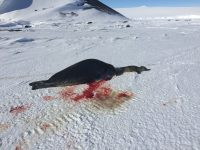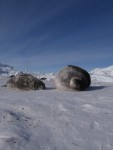10 Frequently Asked Questions About Our Upcoming Antarctic Field Season

1. What are you doing while you are in Antarctica? We are studying the foraging ecology and physiology of one of the Southern Ocean’s top predators—the leopard seal. Leopard seals are known for their sharp teeth, reptilian appearance, and voracious appetite. However, many aspects of their basic biology remain a complete mystery. Our goal is to understand where they go, how deep they dive, what they eat, and how their physiology enables them to live…








